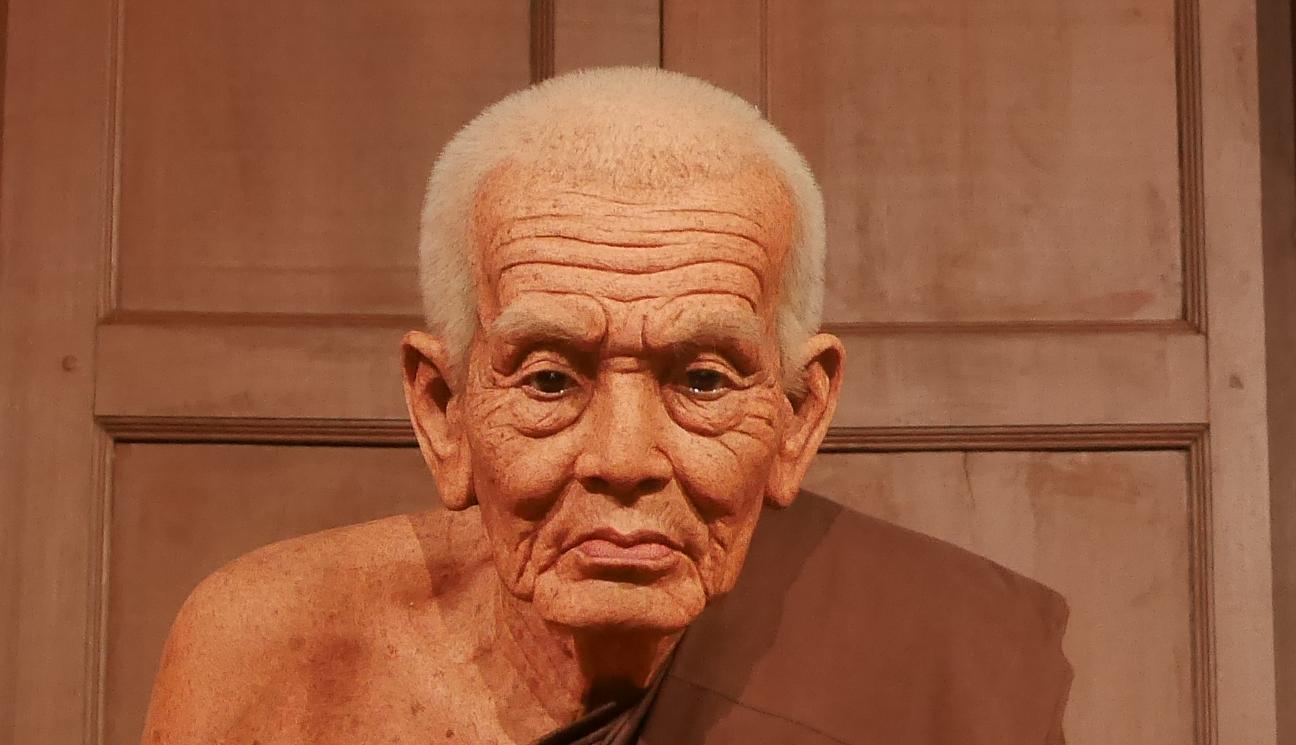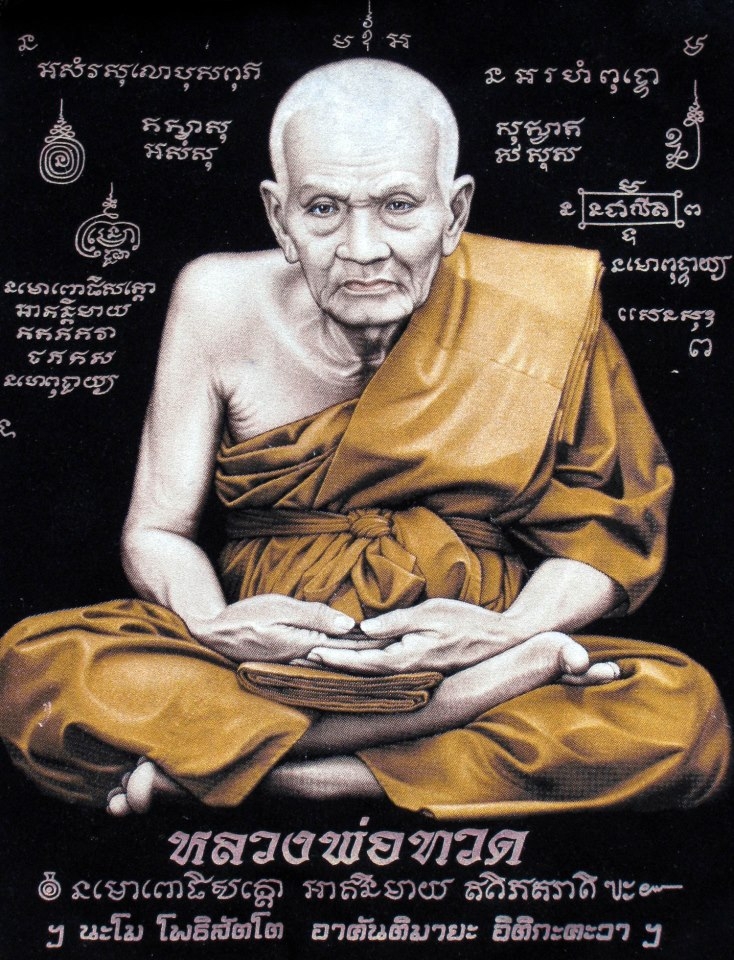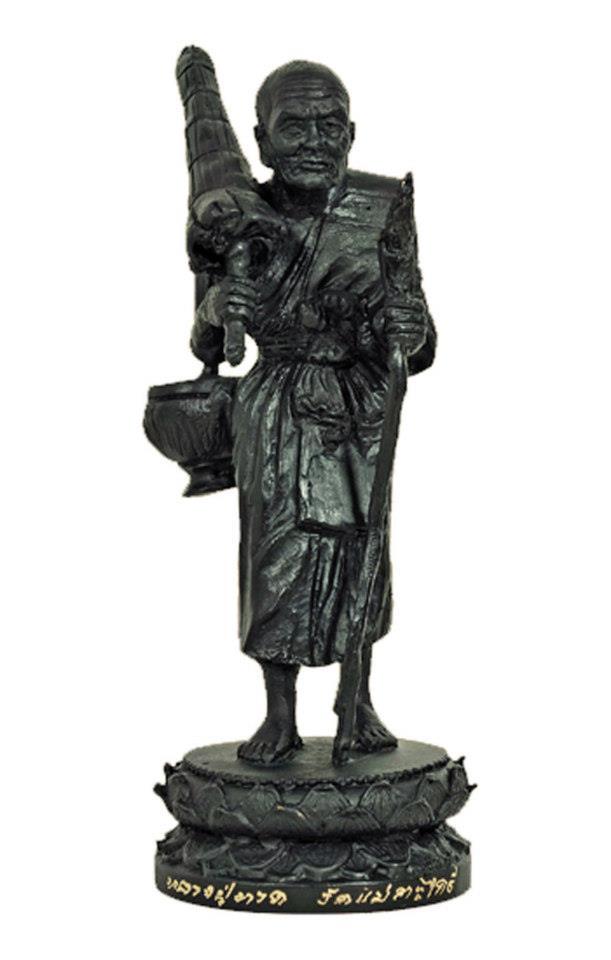Luang Pu Thuat of Wat Chang Hai
Luang Pu Thuat (Thai: หลวงปู่ทวด; 1582-1682 CE, 2125-2225 BE), of Wat Chang Hai Temple, was a Buddhist monk, born in Dee Luang sub-district, Sathing Phra district, Songkhla, Thailand. He is an internationally revered Buddhist monk, who lived in Ancient Siam, and is said to have performed many amazing legendary miracles.
What is the power of the LP Thuad amulet?
Luang Phu Thuad amulets are highly esteemed by Thai amulet enthusiasts and are believed to possess powerful protective qualities. These amulets bear the image of Luang Phu Thuad, a legendary Thai monk who lived during the Ayutthaya period and was renowned for his spiritual prowess and miraculous deeds.
One of the most popular Thai amulets, Luang Phu Thuad amulets are believed to have saved many individuals from imminent danger in various situations, such as car accidents, armed robberies, and even on the battlefield. The amulets are considered to be a source of divine protection, providing a spiritual shield that wards off harm and misfortune.
These amulets are not only cherished for their protective qualities but also for their deep cultural and spiritual significance. They serve as a tangible connection to the rich history and traditions of Thai Buddhism, reminding wearers of the power of faith and the importance of leading a virtuous life. Luang Phu Thuad amulets are highly valued by collectors and spiritual seekers alike, who believe in their ability to bring good fortune, protection, and blessings to those who wear or possess them.
What is the story of Luang Phor Thuad?
According to legend, Luang Pu Thuat was the son of Mr. Hu and Mrs. Chan, who were servants in the household of a wealthy landlord during the reign of King Ramathibodi I. Luang Pu Thuat, originally named Pu, was born in a village near Wat Liab, Dilaung Subdistrict, Sathing Phra District, Songkhla Province. There is much debate about the exact date of his birth, with various sources conflicting. There is therefore some disagreement regarding the exact date of his birth, with three main theories presented:
1. According to the first source, the monk Krissana Channarat, Luang Pu Tod was born on a Thursday, the 4th month of the year, in the Buddhist Era (BE) 2125, which corresponds to the Gregorian calendar date of April 4, 1881. However, this contradicts the second source, which states that Luang Pu Tod was born in the year BE 2131, corresponding to the Gregorian calendar date of April 4, 1885.
2. The second source is a document from the “Manuscripts of the Five Hundred Laws” that mentions the birth of a noble prince, Phra Rajmuni Mee Bon, in BE 990, which corresponds to the Gregorian calendar date of April 4, 1747.
3. The third source, Sudhivong Phongsophibul, states that Luang Pu Tod was born in the year CS 950, which corresponds to the Gregorian calendar date of April 4, 1898.
From a young age, miraculous events surrounded Luang Pu Thuat. When he was a toddler, his parents had to work in the fields of the wealthy landlord, which were about 2 kilometers away from their home. One day, while his mother was breastfeeding him at the field, she saw a large snake approaching. Terrified, she called Mr. Hu, who was nearby, to help chase the snake away. However, the snake didn’t leave. Mr. Hu and Mrs. Chan prayed fervently that the snake wouldn’t harm their son. Eventually, the snake slithered away into the forest, and when they checked on the baby, they found him peacefully sleeping, with a large piece of glassy mucus covering his body. This mucus later solidified into a glass amulet.
As Luang Pu Thuat grew older, his parents entrusted him to a temple to receive education. He was sent to Wat Kudee Luang, also known as Wat Dilaung today, which was close to their home. At the temple, he excelled in his studies, quickly learning both Khmer and Thai languages. At the age of 15, he was ordained as a novice monk.
Due to his dedication to learning, Luang Pu Thuat was further sent to study at a higher level, what was then called “Mulbot Boppanakij,” which is equivalent to higher education in Buddhist studies today. He was sent to study under Somdet Phra Chinasee, a high-ranking monk sent from Ayutthaya, to oversee Wat Sichon or Wat Sichang, which is about 4 kilometers north of Wat Dilaung. There, he quickly absorbed knowledge and completed the curriculum.
Afterward, he continued his studies in Nakhon Si Thammarat to further his education. He resided at Wat Samao Muang, a school, under the supervision of Somdet Phra Maha Piyathassee. He received teachings from various teachers until he became highly knowledgeable and performed many miracles. Eventually, he was bestowed with royal honors by King Ramathibodi I during his last reign under the reign name of Somdet Chao Phraya Muneesaw, the husband of Queen Ramkanya, in his final reign.
At the age of 80, he returned to spend his final years at Wat Pha Ko, his birthplace temple. On March 6, 2225, at the age of 100, Luang Pu Thuat passed away in the city of “Si Racha,” which was once the southern capital of Thailand but fell under English control following the treaty signed in 1908, along with three other southern capitals, making a total of four: Si Racha, Kantang, Trangkanu, and Palit. Subsequently, it became the capital and state in the northern part of the country of Malaysia. Before his passing, he instructed his disciples to inter his remains at Koh Pho District, Pattani Province, where they remain to the present day.


